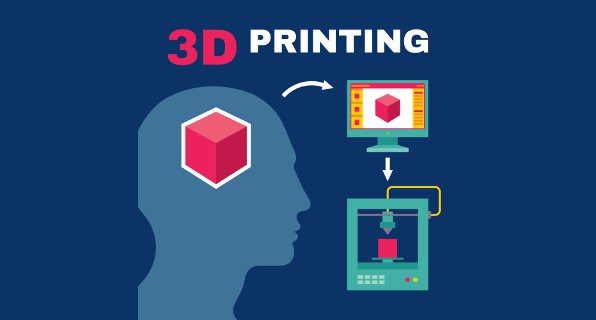
3D printing technology is a process of creating 3 dimensional objects from a design file. This article is designed to provide you an explanation of the currently used 3D printing technologies. The following items were made by using 3D printing technology.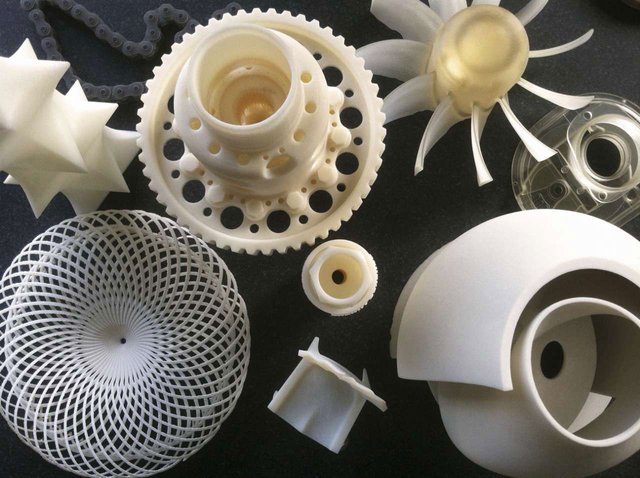
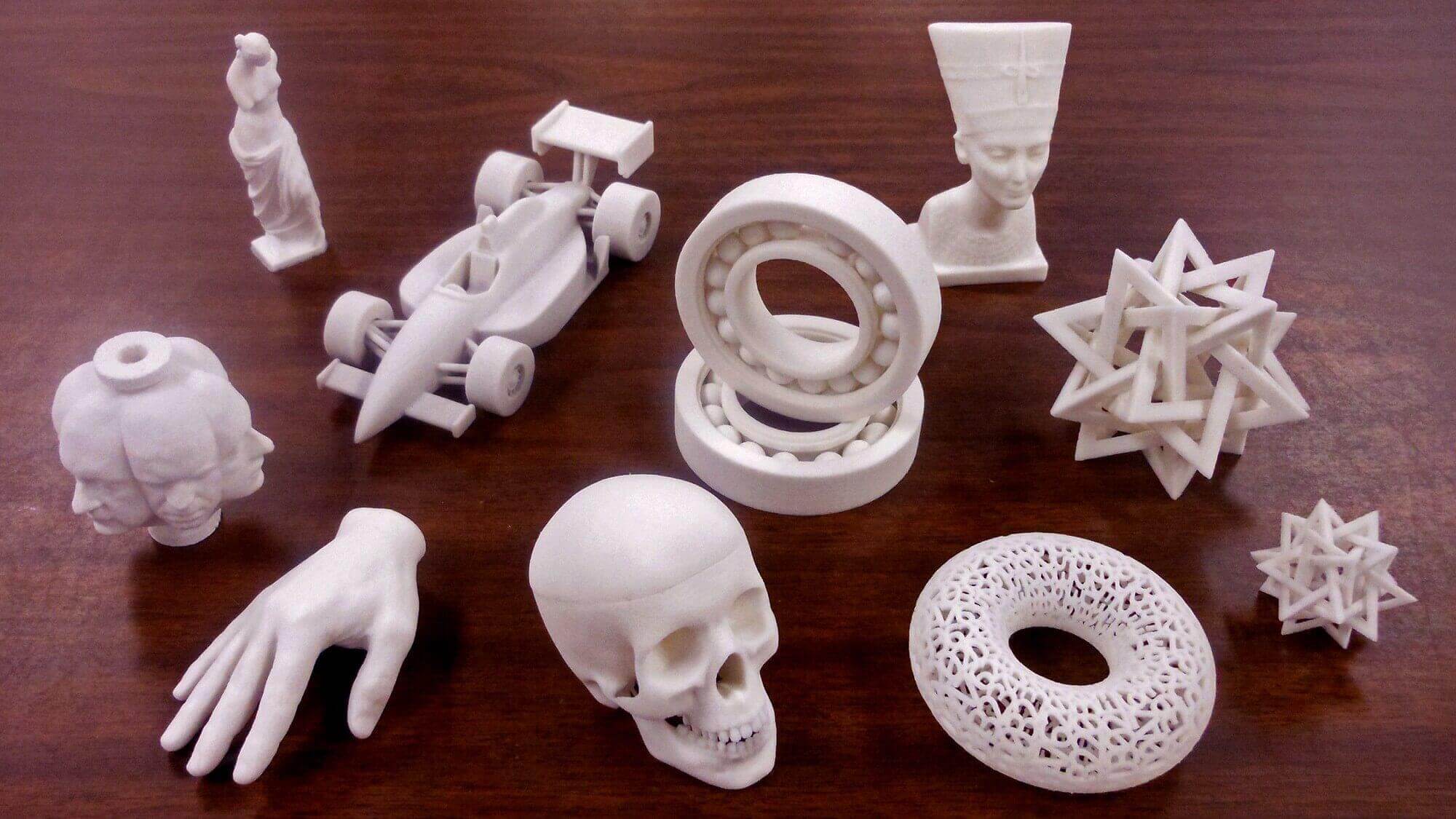
How it began - the history of 3D printing technology
Computer assisted design or CAD was created in 1957 when Dr. Patrick J. Hanratty developed a system to draw and handle an image on a computer. 3D graphical systems were introduced in 1969 with the invention of solid modeling. After that many researchers were trying to create a machinery capable of creating any object based upon the schematics provided to it.
In 1986 Charles Hull started his stereolithography based company, the 3D Systems. He referred to his work as additive manufacturing or 3D printing. His 3D printing technology has been copied and modified by others creating a diverse range of 3D printers.
What is a 3D printer
The 3D printer builds 3D objects from a design file provided to the printer. By using it you can create objects ranging from plastic shapes to houses. Some 3D printers can even print with human stem cells. What you can create depends on the printer, the raw material used in it and your imagination.
What materials can I use for printing:
These are the raw materials you can use for 3D printing. The material you can use depends on your 3D printer.
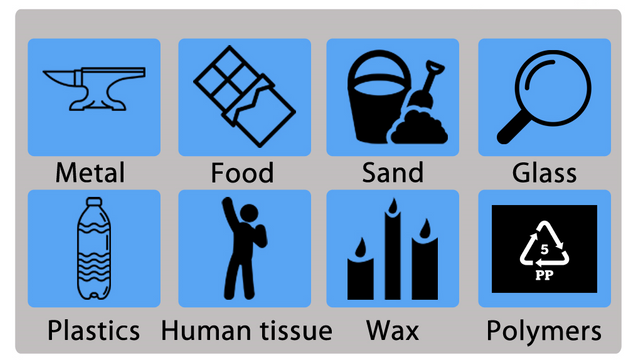
But usually 3D printers use plastic filaments, like ABS or PLA as materials. These are easily accessible and fit the needs of everyday usage like modeling or prototyping.
ABS is a strong and mildly flexible material which is easily recyclable and resistant to heating. This makes it ideal for engineering uses. It is made from petroleum and is often used within mechanical uses.
PLA on the other hand possesses plant based origins giving it a semi-sweet smell during the printing. It does not require a heating bed and it is biodegradable. When properly cooled it provides higher printing speed and better edge quality than ABS making it a popular choice of schools, home printers and prototype designers.
Our printer, 3D - Debrecen, uses PLA as a material for printing.
Explanation of the 3D printing technology
3D printing technology is based on the process of slicing. Slicing transforms an object into a series of very thin layers. The 3D printer then builds the object layer by layer. The final object will be made by fusing these layers together

By using this technology you can create real, usable items. You can build objects like items of furniture, medical items, decorations, protoypes and so on. Smaller 3D printers are capable to print mugs or jewels while the biggest ones can even print airplane wings or houses with ease. To amplify their purpose each 3D printer is calibrated to one or more materials with which it can be used with.
From now on we are going to talk about the traditional 3D printing technology, which prints out plastic objects. You will need a printer, a computer (with the proper installed applications) and filament to begin printing and bringing your imaginations to reality.
How do you print with the filament
Modern 3D printers use thermoplastic materials called filaments (PLA or ABS in different colors) to create objects layer by layer. These filaments can be melted on a high temperature and become solid very swiftly. They are usually stored in solid state like a rolled up thread and can be loaded into the printer easily.
While the printer is relatively expensive, printing itself is very cheap. Due to there are no wasted materials 3D printers are very eco-friendly and very cost-effective. Even your discarded prototypes can be used again. The unused or unnecessary plastic parts can be recycled back to filament by using an external device therefore you will make no pollution and no waste by using 3D printing technology.
Once the designing is finished, a G-code is generated from the CAD (design) file. The computer generates an ordered group of thin layers from the object. Each layer is equal in height. During the printing 3D printers build the object layer by layer effectively fusing the layers together.
Before the printing starts the extruder head heats up to make the filament to be fluid in state. The exact amount of heat depends on the used filament (metals melt on a higher temperature than plastics). Our printer uses PLA material which requires 230-250 degrees Celsius to be fluid in state.
After that the extruder head is moved to position by the moving belts and the printing itself begins. The hot end of the extruder head is so hot that it is able to produce a continuous stream of filament printing the object layer by layer.
For ABS filament a heat bed is needed. The heat bed used on the plate keeps the plastic warm during the printing. It prevents the object from getting distorted or deformed by contacting a cool surface or overheaten material after cooling down.
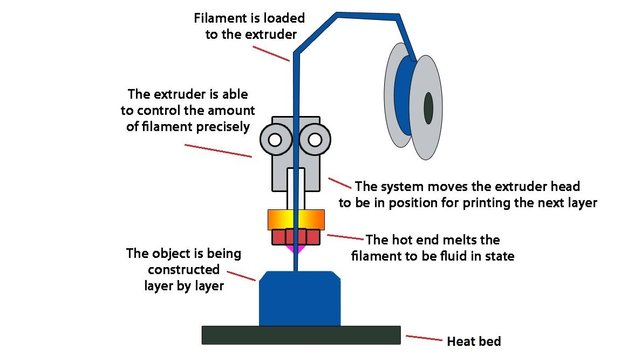
Once a layer is finished the plate of the printer lowers or the extruder head is lifted up by a device to create space for the next layer. This limits the size of the printed object to be within the dimensions the extruder head can reach. An other common problem is the overstreching of the moving belts. In this case the printing itself will be inaccurate and the belts are required to be replaced. In 3D - Debrecen we got rid of this problem by using no belts.
It is possible to create objects stretching in the air. For example an airplane with wings. In this case either a support should be built first or you can print the support together with the object. In general the support is constructed from the same material as the object but with less density so it can be removed during the post processing. There are support materials which dissolve in water as well. The remaining support material can be recycled back to it's original state by using external devices.
What to consider when buying a 3D printer
The 3 most important factors are:
Dimensions
Printing quality
Printing speed
You should also choose what type of filament you are going to use.
You can consider the number of extruder heads. By using a printer which has more than one extruder head, you can use more than one type of filament creating a more colorful object or printing something which is composed by more than one type of material.
Conclusion
The 3D printer technology is not just a way to design your household or business, it is a way to create a better present and future. Whether you are an artist, an inventor, an engineer, a manufacturer, a scientist or someone who just want to create, 3D printer is the ultimate choice for you.
nice idea man. how much the price of the machine on market?
Downvoting a post can decrease pending rewards and make it less visible. Common reasons:
Submit
The Cheap 3D Printers under $500 / $1000
Downvoting a post can decrease pending rewards and make it less visible. Common reasons:
Submit
thank you friend
Downvoting a post can decrease pending rewards and make it less visible. Common reasons:
Submit
Good day. Competitive prices make Snapfish online an affordable option for those looking to print photos. This makes it an accessible platform for users of any budget, ensuring that no one misses out on the opportunity to preserve their precious memories, and in snapfish reviews users write that they really appreciate the company for this. It is worth noting that the company also provides the opportunity to make personalized gifts at an affordable price, which their customers love.
Downvoting a post can decrease pending rewards and make it less visible. Common reasons:
Submit